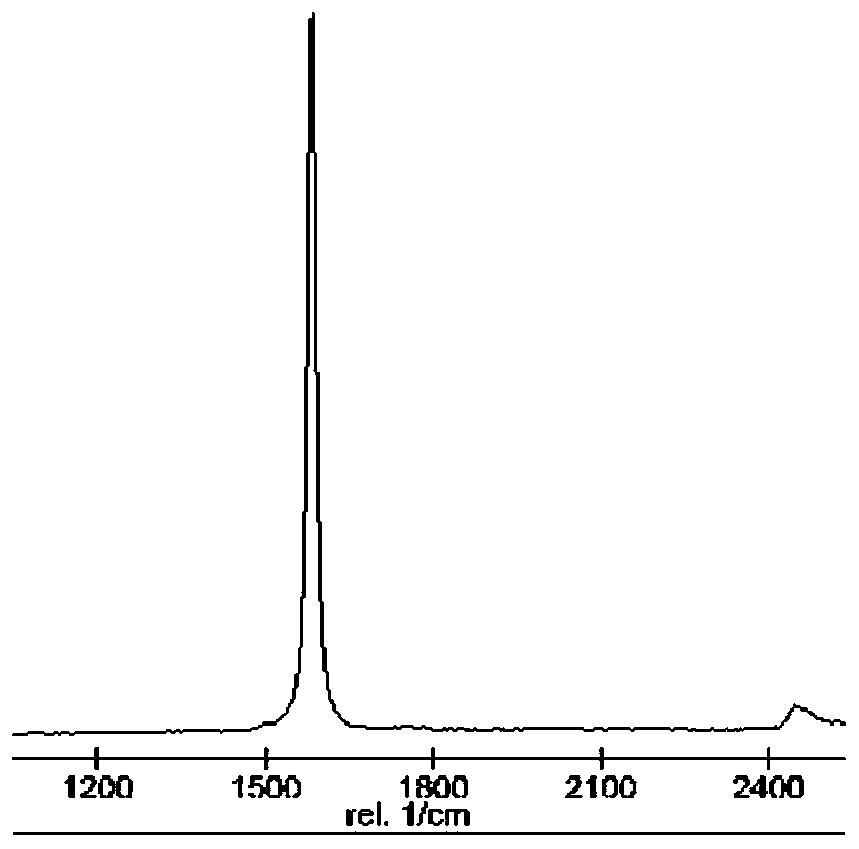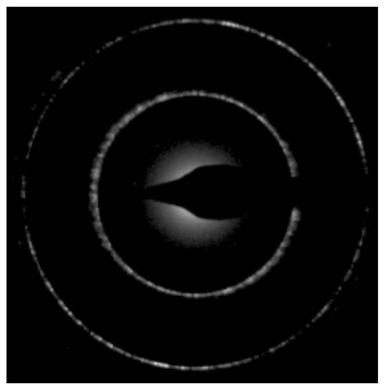Method for electrocatalytic preparation of zero-defect disorderly stacked graphene nanofilm and application
A graphene film, defect-free technology, applied in the direction of graphene, chemical instruments and methods, nano-carbon, etc., can solve the problems of high requirements for graphene preparation, and achieve the goals of improving light conversion efficiency, high sound clarity, and reducing repair temperature Effect
- Summary
- Abstract
- Description
- Claims
- Application Information
AI Technical Summary
Problems solved by technology
Method used
Image
Examples
Embodiment 1
[0038] (1) The graphene oxide is formulated into a graphene oxide aqueous solution with a concentration of 0.5ug / mL, and the mixed cellulose ester (MCE) is used as a substrate to suction and filter into a film.
[0039] (2) Place the graphene oxide film attached to the MCE film in an airtight container and fumigate at a high temperature of 60 degrees HI for 1 hour.
[0040] (3) Coating the melted paraffin uniformly on the surface of the reduced graphene oxide film by evaporation, casting, etc., and slowly cooling at room temperature.
[0041] (4) The graphene film coated with the solid transfer agent is slowly washed with ethanol to dissolve the MCE film.
[0042] (5) The graphene film supported by the solid transfer agent obtained above is slowly volatilized off the solid transfer agent at 120 degrees to obtain an independent self-supporting graphene film, the thickness of the graphene film is about 30 atomic layers, and the transparency is 95 %.
[0043] (6) Gradually heat the graphe...
Embodiment 2
[0048] (1) The graphene oxide is formulated into a graphene oxide aqueous solution with a concentration of 10ug / mL, and the mixed cellulose ester (MCE) is used as a substrate to suction and filter to form a film.
[0049] (2) Place the graphene oxide film attached to the MCE film in an airtight container and fumigate at a high temperature of 100 degrees HI for 10 hours.
[0050] (3) Coating the melted rosin uniformly on the surface of the reduced graphene oxide film by evaporation, casting, etc., and slowly cooling at room temperature.
[0051] (4) Place the graphene film coated with the solid transfer agent in acetone to remove the MCE film.
[0052] (5) The graphene film supported by the solid transfer agent obtained above slowly volatilizes the rosin at 300 degrees to obtain an independent self-supporting graphene film with a thickness of about 60 atomic layers and a transparency of 10%.
[0053] (6) Gradually heat the graphene film to 2000°C at a rate of 45°C / min for 1 hour, and the...
Embodiment 3
[0058] (1) The graphene oxide is formulated into a graphene oxide aqueous solution with a concentration of 8ug / mL, and the mixed cellulose ester (MCE) is used as a substrate to suction and filter to form a film.
[0059] (2) Place the graphene oxide film attached to the MCE film in a closed container and fumigate for 8 hours at 80 degrees HI.
[0060] (3) Coat the melted norbornene uniformly on the surface of the reduced graphene oxide film by evaporation, casting, etc., and cool slowly at room temperature.
[0061] (4) Place the graphene film coated with the solid transfer agent in isopropanol to remove the MCE film.
[0062] (5) The graphene film supported by the solid transfer agent obtained above is slowly volatilized off the solid transfer agent at 100 degrees to obtain an independent self-supporting graphene film with a thickness of about 200 atomic layers.
[0063] (6) Gradually raise the graphene film to 2000°C with a heating rate of 20°C / min for 1 hour, and then energize the fi...
PUM
| Property | Measurement | Unit |
|---|---|---|
| breaking strength | aaaaa | aaaaa |
| thickness | aaaaa | aaaaa |
| thickness | aaaaa | aaaaa |
Abstract
Description
Claims
Application Information
 Login to View More
Login to View More - R&D
- Intellectual Property
- Life Sciences
- Materials
- Tech Scout
- Unparalleled Data Quality
- Higher Quality Content
- 60% Fewer Hallucinations
Browse by: Latest US Patents, China's latest patents, Technical Efficacy Thesaurus, Application Domain, Technology Topic, Popular Technical Reports.
© 2025 PatSnap. All rights reserved.Legal|Privacy policy|Modern Slavery Act Transparency Statement|Sitemap|About US| Contact US: help@patsnap.com



